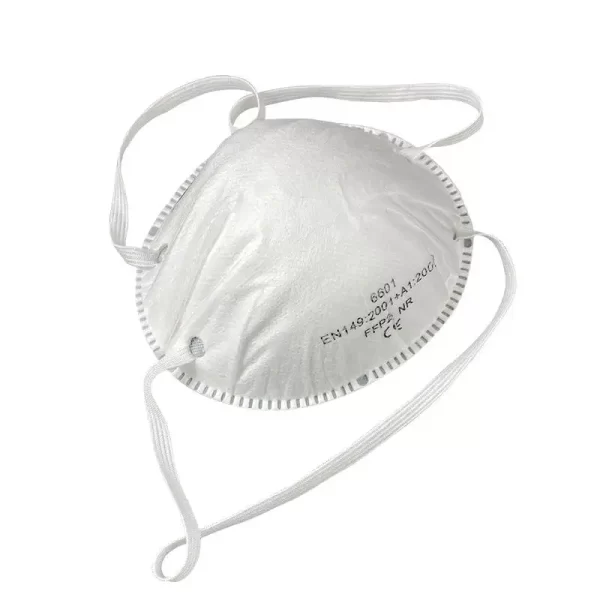FFP2 Masks VS Other Types of Masks: A Comprehensive Analysis to Inform Optimal Protection Choices
Introduction
In the universe of personal protective equipment (PPE), an assortment of face masks have arisen, each offering varying degrees of protection against airborne particulates. Among these, FFP2 masks, governed by European standards, have earned significant recognition for their robust protective capabilities. This comprehensive article delves into a comparative analysis of FFP2 masks versus other prevalent mask types, such as surgical masks, cloth masks, and N95 masks. By providing a deeper understanding of the key differences among these masks, we aim to empower you to make the most informed decision about the optimal mask type for your specific needs.
FFP2 Masks: A Closer Look
FFP2 masks, also known as filtering facepiece respirators, are engineered to filter a minimum of 94% of airborne particles. These masks are designed to fit snugly against the face, thereby minimizing the chance of unfiltered air seeping into the mask. Governed by the European Union’s regulations, FFP2 masks serve as an integral shield for healthcare workers, and more recently, the general public, against airborne pathogens, notably the novel coronavirus responsible for the COVID-19 pandemic.
Understanding the Mechanics of Surgical Masks
Surgical masks, also referred to as medical masks, were originally designed to shield patients from healthcare professionals’ respiratory emissions during surgical procedures. These masks typically consist of multiple layers of material and have a looser fit compared to FFP2 masks. While surgical masks are adept at protecting against larger droplets, splashes, or sprays, they do not effectively filter smaller airborne particles. As a result, FFP2 masks are recommended for scenarios with a higher risk of exposure to airborne particles, such as during a pandemic or for people working in healthcare facilities.
Cloth Masks: Basic Protection and Accessibility
Cloth masks, generally made from various fabrics like cotton, are the most accessible and simple form of facial protection available. While they do provide a basic level of protection against larger respiratory droplets, they fall short in effectively filtering out smaller, airborne particles. For situations that demand high-level protection, such as in healthcare facilities or areas with high community transmission of respiratory viruses, FFP2 masks, with their superior filtration performance, stand out as a preferred choice.
The N95 Mask: America’s Answer to the FFP2
N95 masks, governed by the United States’ National Institute for Occupational Safety and Health (NIOSH), are a close comparison to FFP2 masks. They are designed to filter out at least 95% of airborne particles, making them a potent ally in the fight against airborne pathogens. While the filtration efficiency of N95 and FFP2 masks is very similar, some differences may arise due to the different regulatory standards and testing procedures adopted by the US and the EU. However, both mask types provide high-level protection and can be considered interchangeable in the absence of specific regional regulations or availability.
A Comparative Analysis: FFP2 Masks vs. Surgical Masks vs. Cloth Masks vs. N95 Masks
Having established the basic premise of each type of mask, let’s delve deeper into a comparative analysis based on various parameters.
Filtration Efficiency: FFP2 and N95 masks both offer high filtration efficiency, filtering out 94% and 95% of airborne particles, respectively. In contrast, surgical masks are designed primarily to protect others from the wearer’s respiratory droplets, and do not offer as high a degree of protection against airborne particles for the wearer. Cloth masks offer the lowest filtration efficiency among these types, especially if they are made of a single layer of fabric or if the fabric weave is loose.
Fit and Seal: FFP2 and N95 masks are designed to fit snugly on the face, creating a seal that minimizes the possibility of unfiltered air entering the mask. This seal is essential in ensuring the mask’s effectiveness. Surgical masks and cloth masks, on the other hand, do not provide a close facial seal, making them less effective against airborne particles.
Reusability: Cloth masks, designed for regular use and washing, are the most reusable. In contrast, FFP2 and N95 masks are generally intended for single-use in a healthcare setting, although they can be reused with caution in a non-healthcare setting, provided they are not damaged or dirty. Surgical masks are also typically single-use.
Comfort and Breathability: Comfort and breathability can vary significantly depending on the mask type and design. Generally, cloth masks tend to be the most comfortable and breathable, while FFP2 and N95 masks can be less so due to their tighter fit and higher filtration efficiency. However, comfort can vary significantly from person to person.
Availability and Cost: Cloth masks are generally the most accessible and affordable, while surgical masks are also relatively easily available. FFP2 and N95 masks tend to be more expensive and can be harder to find, especially during times of high demand.
Conclusion
Choosing the right face mask hinges largely on the context and the risk level of the wearer’s environment. For situations with high risk of exposure to airborne particles, such as healthcare settings during a pandemic, FFP2 and N95 masks offer the most effective protection. Conversely, in scenarios where the risk is significantly lower, surgical or cloth masks could suffice.
By understanding the stark differences between these mask types, individuals can make informed decisions about their personal protection needs. As we continue to wage war against airborne diseases, the role of effective personal protective equipment like FFP2 masks remains invaluable. In the end, it’s not just about wearing a mask—it’s about wearing the right mask.
Please visit our website for more product details https://medposnonwoven.com/product/ffp2-nr%ef%bc%88n95%ef%bc%89respirator-cup-mask-with-valve/

